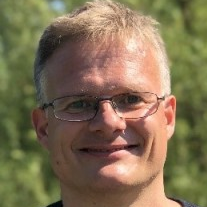Sustainable Water Management
A special issue of Sustainability (ISSN 2071-1050). This special issue belongs to the section "Resources and Sustainable Utilization".
Deadline for manuscript submissions: closed (30 October 2009) | Viewed by 125957
Special Issue Editor
Interests: water resources engineering; agricultural water management; pollution control; wastewater treatment; decision support systems; treatment wetlands; integrated constructed wetlands; hydrology; storm water management; sustainable flood retention basins; sustainable drainage systems; permeable pavement systems; ponds
Special Issues, Collections and Topics in MDPI journals
Special Issue Information
Sustainable water management is part of sustainable development; meeting the needs of the present without compromising the ability of future generations to meet their own water needs. Achieving sustainable water management requires a multidisciplinary and holistic approach in which technical, environmental, economic, landscape aesthetic, societal and cultural issues are addressed. Further research is required to guide the development of appropriate sustainable water management measures, strategies and policies.
The wider research community is therefore invited to contribute to this special issue by submitting comprehensive critical reviews and original research articles.
Keywords
- Sustainability
- Sustainable development
- Water supply
- Water treatment
- Wastewater treatment
- Storm water management
- Natural treatment methods
- Wetlands
- Management
- Strategies and policies
- Global change
- Flood retention structures
Benefits of Publishing in a Special Issue
- Ease of navigation: Grouping papers by topic helps scholars navigate broad scope journals more efficiently.
- Greater discoverability: Special Issues support the reach and impact of scientific research. Articles in Special Issues are more discoverable and cited more frequently.
- Expansion of research network: Special Issues facilitate connections among authors, fostering scientific collaborations.
- External promotion: Articles in Special Issues are often promoted through the journal's social media, increasing their visibility.
- e-Book format: Special Issues with more than 10 articles can be published as dedicated e-books, ensuring wide and rapid dissemination.
Further information on MDPI's Special Issue policies can be found here.





